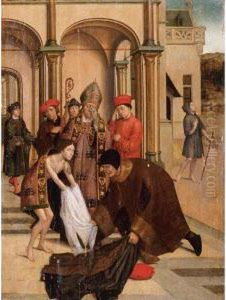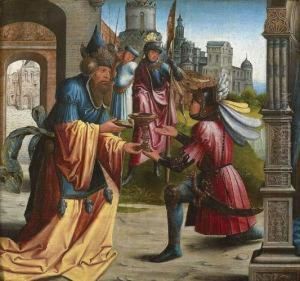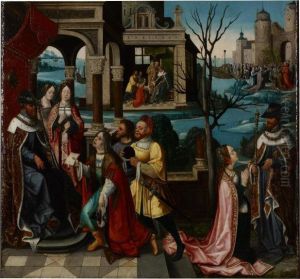Jan Ii Van Coninxloo Paintings
Jan II van Coninxloo was a Flemish Renaissance painter, born in 1489 in Brussels, which was then part of the Habsburg Netherlands. He hailed from a family of artists; both his father and grandfather, Jan I van Coninxloo, were painters, which suggests that he likely received his initial training within his family's workshop. Little is known about his early years and education, but he is presumed to have traveled and studied under other contemporary artists to refine his skills.
Jan II van Coninxloo is known primarily for his landscape paintings and his contribution to the development of this genre during the Renaissance. He was among the artists who moved away from the traditional background landscapes of the Early Netherlandish painting, which were often imaginary and symbolic, towards more naturalistic and topographically accurate depictions of the landscape. This shift was part of a broader transformation in Renaissance art, where there was an increasing interest in the natural world and the study of light, atmosphere, and perspective.
Van Coninxloo's works often featured biblical or historical subjects set within these carefully rendered landscapes. He was adept at integrating human figures into these settings, creating harmonious compositions that reflected the emerging aesthetic of the time. His painting style was characterized by a delicate touch and a keen eye for detail, which is evident in the intricate rendering of trees, foliage, and atmospheric effects in his landscapes.
Despite the significance of his work, Jan II van Coninxloo did not gain the same level of fame as some of his contemporaries, such as Pieter Bruegel the Elder. Nevertheless, his contributions to the art of landscape painting were important, and his works were influential in the continued evolution of the genre.
The exact date of Jan II van Coninxloo's death is uncertain, but it is believed he died between 1560 and 1565. His legacy lived on through his paintings and the influence he had on subsequent generations of artists, who continued to explore and expand upon the naturalistic landscape tradition that he helped to pioneer.


